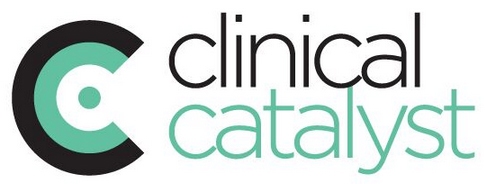As a practitioner, you know to avoid “medical speak” when talking to your patients. But this isn’t as easy as it seems.
For years, you’ve studied biology, health, and diseases. You’ve immersed yourself in all the body’s systems and how to help your patients get better. And you’re most likely very gifted in your craft.
But your patients come from a totally different world. They don’t have all the training and education you do, and can’t even come close to speaking the same language. They just want help.
So, how can you communicate with your patients clearly, so they know what you’re recommending and why it’s important? Here are 3 tips to help you ditch the jargon and start connecting with your patients.
Your Patients Want to Understand You
Before we dive into the tips, let’s take a step back and understand the problem.
Many clinicians struggle when trying to communicate with their patients. They talk about their services and explain the diagnosis. And at first, the patient is following along just fine. But all too soon, their eyes gloss over, and they’re completely lost. It’s a far more common issue than you might think.
- 1 in 4 patients don’t understand the information their practitioner provides them.
- 3 in 4 patients report they don’t leave their appointment on a positive note because they simply don’t understand.
- 4 in 5 patients believe they’d see an improvement in their health if they understood the whole picture.
When your patient isn’t tracking with the language you’re using, they may not grasp the importance of what’s going on with their health. And if they don’t understand that, they are less likely to follow your protocols. Plus, they may not be motivated to make the necessary lifestyle changes if they don’t understand why it’s so important that they do.
You may be thinking, “I know how important it is to communicate effectively with my patients. So how can I do it more effectively?”
Here’s the hard truth. It may not be obvious when a patient doesn’t understand you. But the good news is that patients really do want to understand. With a little verbal elbow grease and increased awareness, it’s totally doable. The answer may be as simple as changing up the words you use.
1. Identify the Jargon.
Have you ever gone on a trip to somewhere new, and your Uber driver started tossing around words that are totally unfamiliar?
Maybe you’re from the west coast and you heard the northern slang of “bubbler” for the first time.
Or perhaps you’re visiting the southern states, and you hear someone say “I’m fit to split!”
When you’re not familiar with a word or phrase, it feels confusing. You try to make sense of the word using context clues, but sometimes, that doesn’t even work. Your brain can’t figure it out, so what you heard doesn’t stick. It has no concrete meaning.
That’s how your patients feel when they hear unfamiliar medical jargon. Words like “subluxation” or “distal points” are no different to them than hearing the same works spoken in a foreign language. They have NO idea what you’re talking about and may not feel comfortable asking you to clarify.
The first step is to figure out the problematic words or phrases you may be using.
It’s easy to forget what qualifies as jargon, especially when you’ve been in the industry for a long time. To help you out, consider the following…
- Quickly flip through your textbooks or other training materials.
- Do a quick Google search and look for lists like “acupuncture terminology” or “chiropractic jargon.”
- Ask a friend or family member who’s not in your field if they know what the terms mean.
As you do this, start making a list of all the words that might be unfamiliar to your patients.
2. Decide On A Translation.
Now that you have your list, it’s time to figure out your translations. Here are three tips to help you replace your clinical jargon with patient-friendly explanations.
Do a Word Swap
Take your list and beside each word, write down an alternate word, phrase, or definition. Here are a few word swap examples, using acupuncture terminology:
- Fascia – connective tissue
- Moxibustion – how blocked energy flow leads to mental or physical health issues
- Jin – the energy you inherit from your parents
- Ying – nutritional energy
- TMM meridians – energy that travels between the muscles and tendons
You get the picture!
Simplify the Concept
There’s a difference between dumbing something down and speaking clearly. What we’re talking about here is the latter.
For example, try to avoid using a term like “distal points” without explaining what they are.
Share with your patient how you place needles in two different places – local and distal. Local is where the patient is experiencing pain. Distal is when you place needles away from where they feel pain but in areas that will still help bring relief (like inserting needles into the feet to help with migraines).
One simple test to know if you’ve simplified it enough is to ask yourself, “Would my 6-year-old nephew understand what I’m saying or writing?”
Get Conversational
Read what you write out loud. Does it sound like how you’d speak in real life?
Here’s a handy free tool we love called Hemingway App. It helps “score” the readability of your writing and color-codes any hard-to-read sentences. Try to aim for a 5th to 6th-grade reading level.
3. Test and Refine Your Messaging
Once you’ve identified your jargon hot spots and figured out how to simplify them, it’s time to take them for a test drive! Start creating content or having conversations using your new-found patient-friendly language.
Along the way, ask for feedback. Have someone who isn’t familiar with your industry read over your content and tell you what they think.
You can also check with your patients. During your appointments, quiz them on a few terms and see how it goes.
Ask them to “teach back” what you’re talking to them about. Are they able to explain it in their own words?
Checking in with your patients along the way will help to improve your communication. And as your messaging becomes clearer, you may start to notice better engagement from your patients.
Saying What You Mean Takes Practice
Your patients are smart, but they don’t have your level of training. They’re not fluent in your clinical language. Simplifying your language can help bridge the gap between what you’re trying to tell them and how they’re able to hear it.
Start looking for ways you can drop some of the complicated jargon and speak using language your patients will understand. Grab a friend or colleague and start practicing. The more you practice, the easier it’ll get – we promise. You got this!

